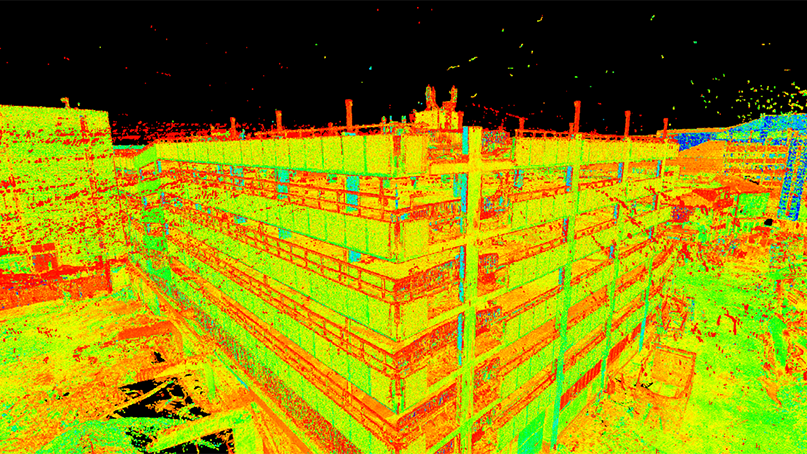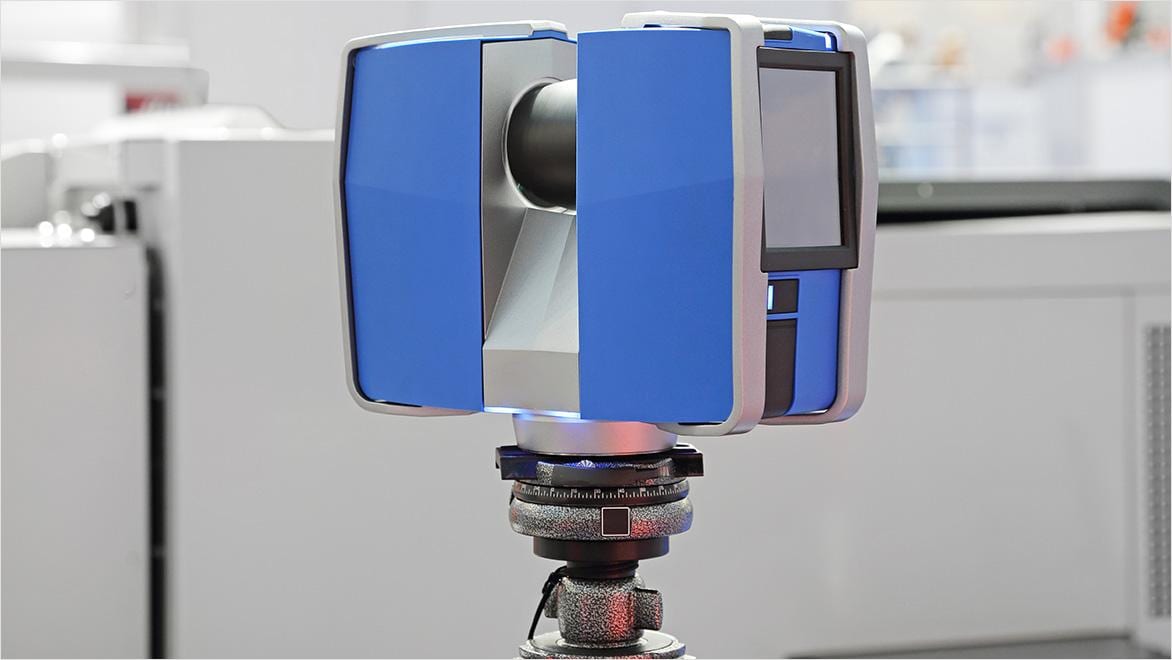Exactly How 3D Laser Scanning Changes Architectural Style and Building And Construction Projects
3D laser scanning is transforming the landscape of building design and building and construction. This innovation supplies unmatched accuracy in recording existing environments, which assists in better job preparation and execution. It minimizes mistakes while improving effectiveness in numerous stages of growth. The ramifications for partnership among architects, designers, and various other stakeholders are considerable. These improvements unlock to new layout possibilities and ingenious solutions. What lies in advance for this advancing technology?
The Basics of 3D Laser Scanning Innovation
3D laser scanning modern technology may seem complicated, its core concepts are transformative and uncomplicated for building layout. This technology utilizes laser beam of lights to record specific measurements of physical structures, generating an in-depth factor cloud that stands for the scanned setting. A laser scanner releases quick pulses of light, measuring the time it considers the light to return, which permits the computation of distances with exceptional precision.
The resulting factor cloud can be exchanged a 3D design, supplying engineers with very useful aesthetic information. This design allows experts to evaluate and control design components within their tasks, enabling for ingenious options and boosted visualization. By using 3D laser scanning, architects can better understand the status quo of a website, making certain that brand-new styles harmonize with their environments. This combination of technology right into building design marks a considerable development, fostering creative thinking and accuracy in the field.

Enhancing Accuracy and Efficiency in Architectural Projects
As building jobs significantly demand precision and speed, 3D laser scanning becomes an essential device in boosting both accuracy and efficiency. This innovation catches countless information factors in a quick duration, developing comprehensive and exact 3D models of existing frameworks. The capability to acquire accurate dimensions reduces the risk of mistakes throughout the layout stage, permitting architects to visualize their projects with exceptional clearness.
Additionally, the quick information collection procedure decreases the moment invested on-site, making it possible for groups to concentrate on evaluation and style renovations. With real-time data availability, changes can be made promptly, promoting a more structured process. The combination of 3D laser scanning into building methods not only boosts dimension accuracy yet likewise improves the total task timeline, promoting quicker decision-making. In a market where precision is crucial, this technology stands as a transformative pressure, elevating the standards of building style and building projects.
Simplifying Collaboration Amongst Stakeholders
While conventional architectural procedures frequently include fragmented communication amongst stakeholders, 3D laser scanning cultivates a much more cohesive joint environment. By supplying exact, high-resolution data, this modern technology allows engineers, professionals, customers, and engineers to run from a unified point of recommendation. The in-depth visualizations created with laser scanning remove misinterpretations and uncertainties, ensuring that all parties have access to the very same details.
This transparency improves decision-making and motivates prompt feedback, as stakeholders can easily imagine layout aspects and spatial partnerships. Additionally, the integration of 3D scanning data into Structure Information Modeling (BIM) platforms further streamlines collaboration, enabling real-time updates and adjustments. Such smooth interaction not just minimizes disputes yet additionally increases task timelines, as all stakeholders stay aligned throughout the design and building and construction stages. Eventually, 3D laser scanning transforms typical operations into a more collective and effective process, benefiting all parties involved.
Opening Imaginative Opportunities in Layout
By allowing designers to imagine complex spatial relationships and intricate information, 3D laser scanning exposes imaginative opportunities in style. This innovation permits exact mapping of existing settings, allowing engineers to check out ingenious concepts that could have previously seemed not practical. With extremely accurate information, designers i thought about this can experiment with unconventional kinds and materials, pushing the boundaries of typical style.
The assimilation of 3D laser scanning right into the design procedure cultivates collaboration amongst multidisciplinary teams, urging the exchange of concepts and enhancing creative find thinking. The thorough visualizations created by this innovation not only help in identifying possible design difficulties but likewise motivate services that might not have been thought about. As a result, engineers can create a lot more vibrant and appealing spaces that reverberate with customers while satisfying useful requirements. Eventually, 3D laser scanning changes the architectural landscape, empowering designers to understand their visions with extraordinary precision and imagination.
The Future of 3D Laser Scanning in Architecture and Construction
The integration of 3D laser scanning right into building layout not only boosts creative thinking yet likewise establishes the phase for its advancing role in the future of architecture and building. As innovation advancements, the precision and performance of laser scanning will certainly remain to improve, allowing builders and architects to create much more complicated styles with precision - 3D Scanning. Making use of this innovation in real-time information collection will assist in far better decision-making, lowering mistakes and simplifying operations
Future applications might consist of digital and enhanced reality combinations, allowing stakeholders to visualize projects in immersive settings. On top of that, as sustainability ends up being a concern, 3D laser scanning will support the development of energy-efficient layouts by supplying detailed understandings right into existing visite site structures. As collaboration amongst numerous disciplines comes to be even more necessary, the capability to share accurate 3D models will certainly cultivate advancement and enhance project end results. Eventually, 3D laser scanning will redefine criteria in architectural design and building and construction practices.
Often Asked Concerns
What Is the Price of Executing 3D Laser Scanning Technology?

The length of time Does a Typical 3D Laser Scanning Task Take?
A regular 3D laser scanning task can take anywhere from a couple of hours to a number of days, depending upon elements such as the job's size, complexity, and the degree of information required for accurate information capture.
What Kinds Of Projects Advantage Many From 3D Laser Scanning?
3D laser scanning advantages different projects, particularly large buildings, historical restorations, and complex remodellings. It improves accuracy in dimensions, minimizes errors, and gives in-depth data essential for reliable planning and execution in building design and building and construction.

Exist Specific Software Application Programs Required for 3D Laser Scans?
Yes, certain software program programs are important for processing 3D laser scans. 3D Scanning. Popular choices consist of Autodesk Wrap-up, Faro Scene, and Leica Cyclone, each offering one-of-a-kind features tailored for evaluating and imagining checked information properly in different projects
Just How Does 3D Laser Scanning Influence Environmental Sustainability in Building And Construction?
3D laser scanning improves environmental sustainability in building and construction by reducing product waste, enabling precise measurements, and promoting reliable source usage. This modern technology permits far better preparation, minimizing the environmental footprint of building projects through boosted precision and performance.
3D laser scanning is transforming the landscape of architectural design and building. 3D laser scanning technology might appear complicated, its core principles are transformative and straightforward for building style. By enabling engineers to picture complex elaborate information and spatial connections, 3D laser scanning reveals imaginative opportunities in design. The assimilation of 3D laser scanning right into the design process cultivates partnership among multidisciplinary groups, encouraging the exchange of concepts and improving creativity. The assimilation of 3D laser scanning into building style not just improves creativity yet also establishes the stage for its advancing function in the future of style and building.